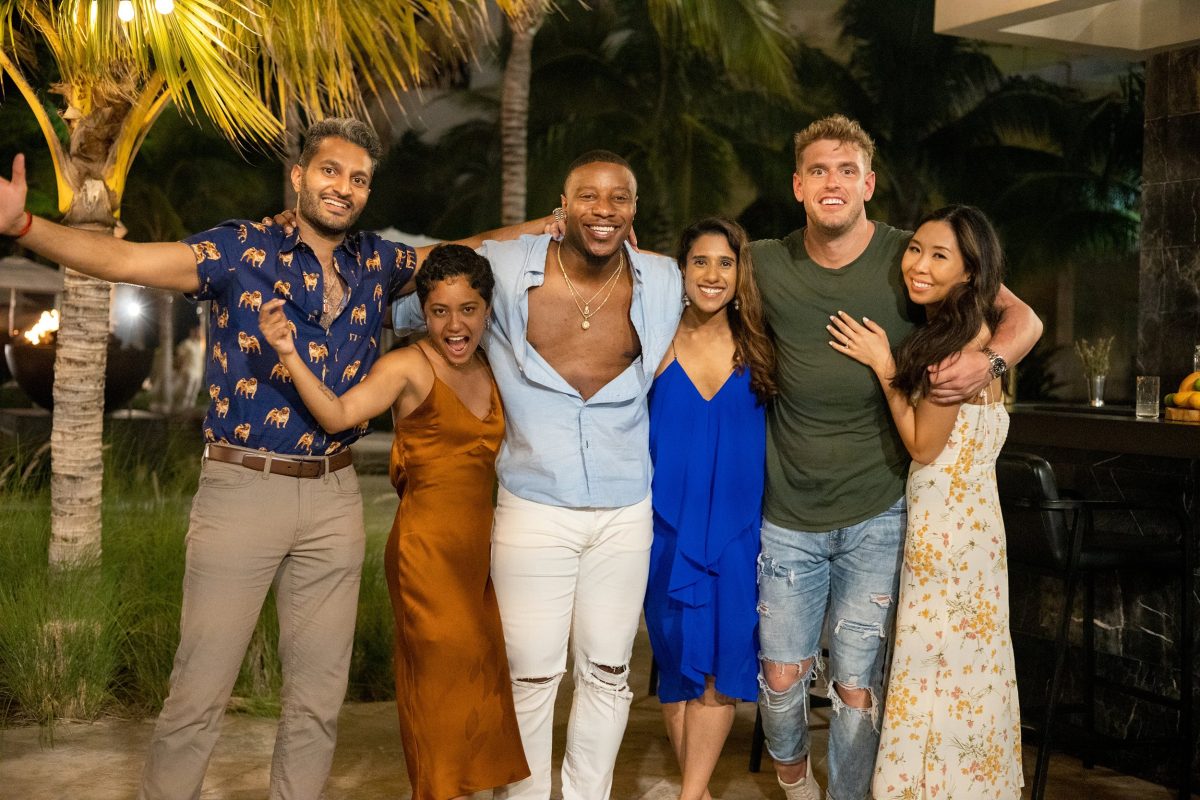There’s a mentality that always makes its way into the mind of someone attempting to navigate the dating scene: “I don’t care about looks as long as they have a good personality.” Well, Netflix’s “Love is Blind,” which premiered in 2020, proved that that statement actually does have some weight to it: you can fall in love with someone just based on their personality and live happily ever after. The second season of the series (which premiered on Friday, Feb. 11), however, does not prove that.
After the success of the first season, fans waited two years after the announcement in March 2020 that the series would be renewed for both seasons two and three. The series’ first season saw six couples form, two of which ended up tying the knot at the end of the ten episodes (and for the record, both couples are still together today). In season two, another six couples were brought together. However, the couples this season definitely don’t have the charm and feeling of true love that was very present in the show’s first season. It feels as though a lot of the romance is forced, and that many of the couples ended up settling for each other to make it farther in the experiment, rather than because they had actually found their life partner. The poor chemistry between a lot of the singles makes for some very awkward moments, such as contestant Jarrette Jones’s proposal to potential partner Mallory Zapota getting rejected. Jones reattempted to find another partner, asking for contestant Iyanna McNeely’s hand in marriage, making for a bit of an ungraceful love story and leaving viewers wondering if the love between the two is real or not.
In the experiment, singles date “blindly” by talking through a wall between two rooms. After ten days pass, one contestant proposes blindly to another, making the two engaged before they even meet. If a couple becomes engaged, they are allowed to see each other for the first time. The couples then travel to Mexico for a honeymoon and spend the following four weeks planning their weddings before they make the decision on their wedding day to say “I do” or not. During this time, a lot of the couples figure out their differences, once again creating awkward situations, like when contestants don’t agree about their hygiene routines (which happened on the first night in Mexico for couple Nick Thompson and Danielle Ruhl). A lot of the couples just did not click once making it to their honeymoons, with one couple actually splitting before the vacation had even ended. The connections don’t feel as genuine – more like people who were looking for casual relationships instead of committed marriage.
The finale sees only two of the five couples actually deciding to get married come their wedding day. It’s an oddly satisfying and realistic ending to the second installment of the series, and it was interesting to see that a lot of the couples didn’t feel ready for marriage when it came down to the final moment. A lot of conflicts were shown between couples this season (definitely more than in season one), so it feels right to see that most of the couples involved in these conflicts knew that it just wasn’t their time to get married. The couples that do stay together are the ones with the most chemistry.
Although season two of “Love is Blind” didn’t get the feels going as much as season one did, it’s still enjoyable. No, the personalities aren’t as strong as they were in the show’s debut season, and the couples aren’t as charming or likable, but it’s still a solid ten episodes of television. The experiment definitely works, and it’s heartwarming to see genuine connections form between people without looks playing a part. Some fine tuning to the experiment and stronger personalities would’ve made for an excellent season, but, just like love in the real world, nobody is perfect, and this show certainly reflects that.









